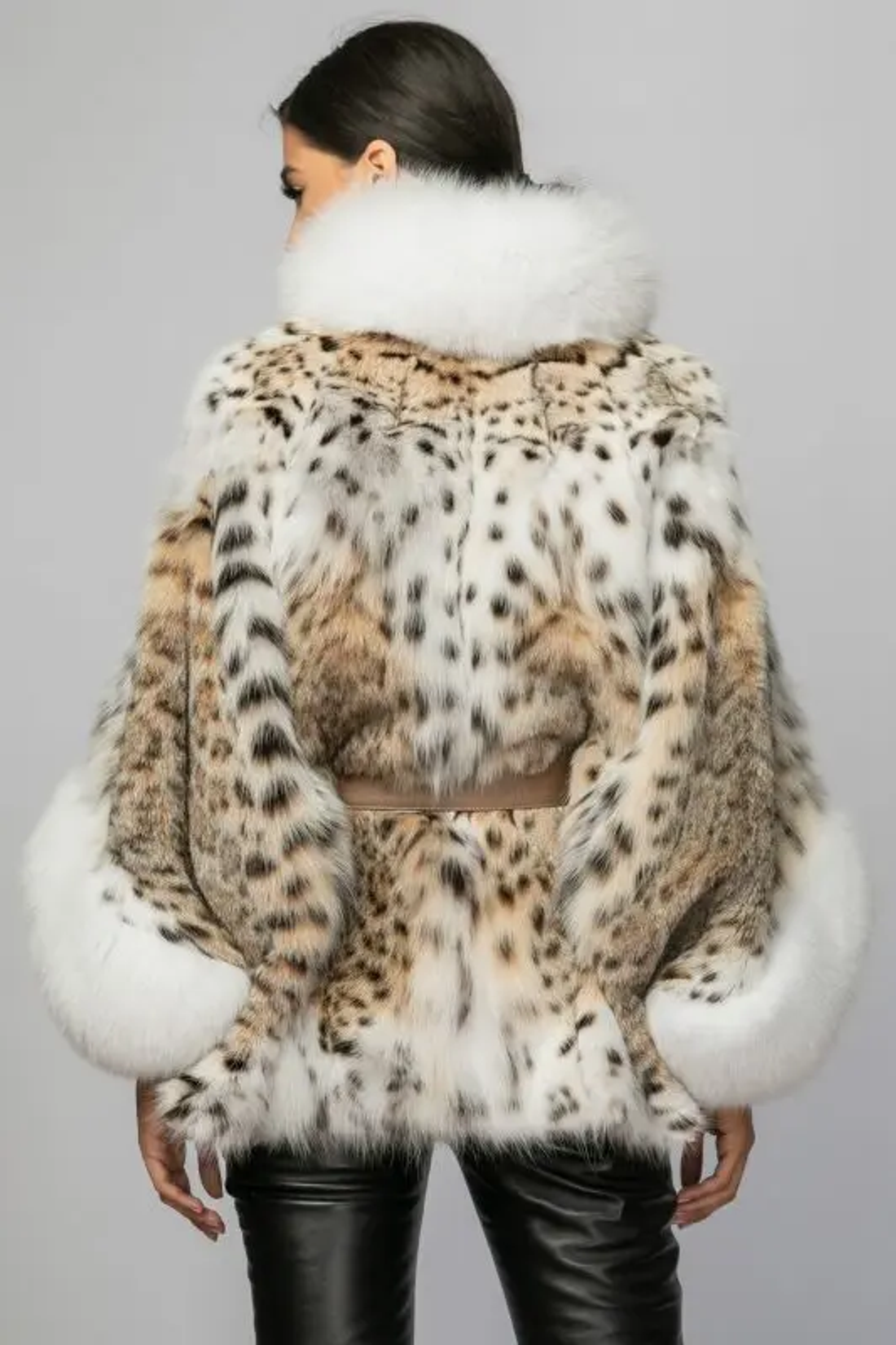Lynx fur coats are the most exotic fur type that the fashion industry has to offer. Dramatic, wild and seductive is a look you will most certainly achieve by wearing one. If you need a garment that can give you an edge and help you boost the exciting part of yourself, then a lynx fur coat is for you.
Products List
- Product
- Qty in Cart
- Quantity
- Price
- Subtotal
-

 - 55%- 55%
- 55%- 55%Long Lynx Fur Coat Zyrab
$3,499.00$7,700.00Long Lynx Fur Coat - Zyrab Elevate your winter wardrobe with our luxurious Long Lynx Fur Coat, expertly crafted for both style and comfort. With a stunning length of 54 inches (135 cm), this coat offers a sophisticated silhouette that is perfect for any... -


Lynx & Fox Fur Coat
$5,390.00Elevate your outerwear wardrobe with this luxurious hip-length lynx bobcat coat, designed to make a statement. Featuring an elegant A-line silhouette, this coat flatters your figure while providing a chic and sophisticated look. The standout oversized... -


Lynx Jacket Riko
$6,270.00Introducing this mid-hip length lynx bobcat coat, a perfect blend of style and sophistication. Designed with an elegant A-line cut, this coat flatters a variety of body shapes while providing a comfortable fit. The flowing silhouette adds a touch of... -


Hooded Lynx Cape
$6,490.00Discover the stunning beauty of this batwing lynx fur cape, a perfect blend of luxury and functionality. Featuring a chic hood, this cape provides warmth and sophistication while framing your face beautifully. The batwing design allows for effortless... -


Lynx Fur Cape Mikaela
$6,490.00The cape features distinct horizontal fur stripes that enhance its unique visual appeal while providing exceptional warmth. The generous batwing design allows for comfortable movement, making it a perfect layering piece for various occasions. -


Lynx Coat Saori
$8,250.00Introducing this stylish hip-length fur coat made from premium lynx bobcat, designed for both comfort and sophistication. The cozy hood offers warmth and versatility, making it perfect for chilly days and casual outings. Its tapered waist creates a... -


Lynx Coat Noriko
$8,250.00Featuring a sophisticated turtle neck collar, this coat provides added warmth and style, making it perfect for colder weather. The tapered waist beautifully accentuates your figure, creating a flattering silhouette, while the elbow-cut sleeves are... -


Lynx Coat Kimiko
$8,800.00Featuring a chic hood, this coat combines practicality with elegance, ensuring warmth on cooler days. The tapered waist enhances your silhouette, providing a flattering fit, while the wide bottom sweep adds a dramatic touch to the overall design. Crafted... -


Lynx Coat Yuna Hooded
$6,600.00Discover the elegance of this 3/4 length lynx bobcat fur coat, a perfect blend of luxury and functionality. Designed with a stylish hood, this coat features a flattering A-line silhouette that gracefully drapes over the body, enhancing your figure with a... -


-


White Lynx Jacket Ezra
$22,000.00Introducing this rare, high-end natural white spotted lynx fur jacket, a striking piece that embodies luxury and elegance. Crafted from white lynx fur, this waist-length jacket features a straight cut that flatters a variety of body types while providing... -


White Lynx Coat Nylah Shawl
$27,500.00Indulge in luxury with this rare, high-end natural white spotted lynx fur coat, a stunning addition to any discerning wardrobe. Crafted from white lynx fur, its mid-hip length offers both elegance and versatility, making it perfect for day or evening...

 € (EUR)
€ (EUR)
 рубли́ (RUB)
рубли́ (RUB)
 £ (GBP)
£ (GBP)
 C$ (CAD)
C$ (CAD)
 A$ (AUD)
A$ (AUD)
 ¥ (JPY)
¥ (JPY)
 BRL (BRL)
BRL (BRL)


